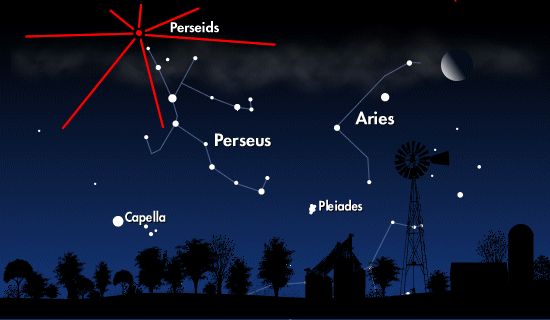Perseids Meteor Shower 2014: Celestial Fireworks
August is also called as the “meteor month” in Northern Hemisphere. During August, the annual Perseid meteor reaches its peak and illuminates the sky with a meteor shower, somewhere around mid-month. This year the Perseid shower will peak during the night and predawn of 12 and 13 of August. However, the full moon on August 10 will hamper the enjoyment of view for all meteor enthusiasts and observers.

The Perseid showers are considered to be the best meteor showers by all the observers. The meteors streak across the sky very fast with a velocity of nearly 37 miles per second, leaving behind long, persistent and bright radiant streaks, in abundance with close to 50-100 meteors to be seen every hour.
Meteors are formed by the debris of comets and asteroids. When Earth passes through this debris, this debris collides with the Earth’s atmosphere creating spectacular radiant display streaks across the sky. The Perseid meteors are known to have originated from comet 109P/Swift-Tuttle. This phenomenon was discovered by Giovanni Schiaparelli in 1865. The radiant of Perseids is known to be the constellation Perseus.
NASA reported that the prime sky-watching periods will be during the night and pre dawn hours on August 12 and August 13. The best location to view the Perseids meteor shower would be far away from city lights with a clear and the darkest patch of sky. NASA recommends lying flat on your back with your feet facing northeast and look up. To minimize the effect of supermoon, meteor spotters should observe the sky with their back to the moon.
If you enjoy camping, then find a spectacular camp place to watch this spectacular celestial display of lights and fireballs. Enjoy with comfy reclining chairs, fellow enthusiasts and friends. the best way to observe the Perseid shower is through naked eyes. Within 30 minutes of lying down and observing the sky your eyes will become tuned to watch the meteor displays. Keep a red light handy for looking on places other than the sky so that the night vision of the eyes is not hampered.
For taking photographs of the meteor shower it is best to use a digital SLR camera than a smartphone. Also, use a tripod.
Happy Meteor Gazing !

